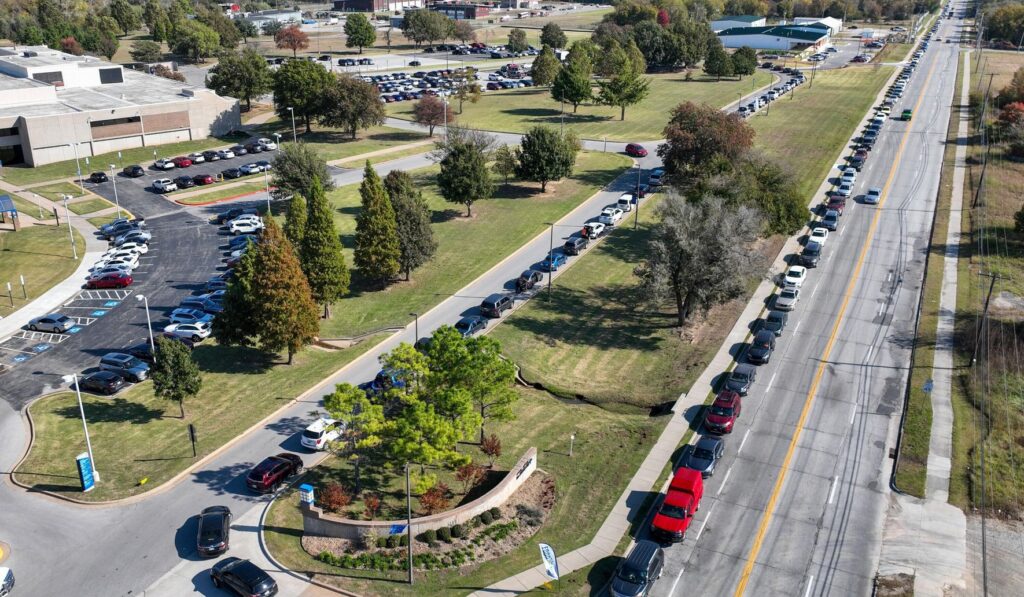The administration instructed states to halt full food assistance payouts after Justice Ketanji Brown Jackson temporarily stayed a lower court ruling, triggering a legal and policy scramble over how benefits are delivered.
The Trump administration told states to stop distributing full food assistance benefits after a Supreme Court action temporarily halted a lower court decision tied to those payments. The move immediately put state agencies in a difficult position, forced quick guidance from federal officials, and left families wondering what to expect. The dispute has become a test of legal authority and administrative control.
The lower court had issued a ruling that altered how benefits were to be paid, creating a window where states were moving to provide expanded assistance. Justice Ketanji Brown Jackson stepped in with a temporary block, pausing that change while higher courts consider the matter. That pause was enough for the administration to tell states to revert to earlier procedures rather than continue under the contested order.
Officials in the administration argued the block created legal uncertainty that required a clear federal response. From a Republican standpoint, abrupt, court-driven shifts in benefit rules without full appellate review threaten fiscal discipline and consistent implementation. The administration framed its instruction as necessary to preserve orderly program operations while the courts sort out the legal questions.
State agencies reacted differently depending on their resources and political leadership, with some immediately suspending the expanded payments and others seeking clarification. Front-line workers and local offices faced practical headaches when systems had to be reprogrammed or notices adjusted on short notice. For many recipients, the change meant anxiety about whether expected funds would arrive on time.
Advocates for continued expanded assistance criticized the administration’s directive, saying it would harm vulnerable families who relied on increased benefits. They urged quick judicial resolution and called for policy solutions that prioritize people struggling to afford food. The legal back-and-forth, they said, should not be used as cover to scale back support states had come to rely on.
Republican lawmakers countered that the rule of law matters and that courts should not allow unpredictable program expansions without clear statutory authority. They pressed the case that federal agencies must follow existing law and funding limits unless Congress acts. For many conservatives, this episode reaffirms concerns about unilateral policy shifts by courts or agencies that can create fiscal and administrative chaos.
Legal experts said the short-term stay by Justice Brown Jackson is a routine tool the justices use to maintain the status quo while cases move up the appeals ladder. Such temporary blocks do not decide the ultimate merits but do give the full court time to review lower-court rulings. The eventual ruling could either cement the lower court’s approach or return the program to the pre-ruling structure.
Meanwhile, federal and state officials warned about operational risks tied to flipping benefit rules back and forth. Payment systems, vendor contracts, and eligibility checks are often built to tight timelines, and sudden reversals risk errors or missed distributions. Those logistical realities add pressure on courts and policymakers to resolve disputes promptly and predictably.
The political stakes are high because food assistance programs are regularly used in debates about government spending and social priorities. Republicans have argued for tighter oversight and clearer statutory authority for program changes, while opponents focus on immediate human needs. The clash highlights how legal decisions can drive policy outcomes as much as legislation does.
As litigation proceeds, families on the ground are left navigating confusing messaging about their benefits. State officials have said they will follow the federal guidance while monitoring court developments and preparing for further instructions. The case is likely to move through appeals and could reach the full Supreme Court for a final decision on how the program should operate.
For now, the immediate takeaway is simple: the temporary judicial pause prompted the administration to halt the expanded distributions, triggering a cascade of operational shifts and political arguments. Expectations are that the courts will take up the central legal questions soon, but until then, the practical fallout will continue to be felt by agencies and benefit recipients alike.



